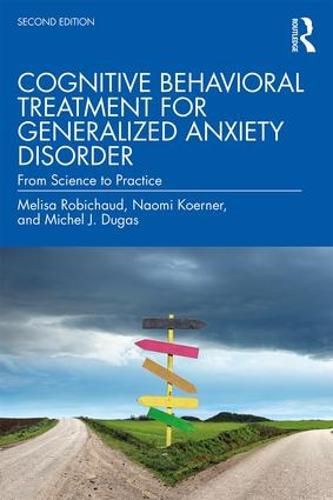Readings Newsletter
Become a Readings Member to make your shopping experience even easier.
Sign in or sign up for free!
You’re not far away from qualifying for FREE standard shipping within Australia
You’ve qualified for FREE standard shipping within Australia
The cart is loading…






The second edition of Cognitive Behavioral Treatment for Generalized Anxiety Disorder is an essential read for all clinicians, researchers, and anyone who wants to learn about how cognitive behavioral therapy (CBT) can be applied to treatment for generalized anxiety disorder.
Building on the idea that intolerance of uncertainty keeps people with generalized anxiety disorder (GAD) stuck in repeated cycles of excessive worry, anxiety, and avoidance, this revised and updated edition lays out the essentials of GAD assessment and diagnosis, step-by-step illustrations of CBT treatment, and questionnaires and monitoring forms that can be used in assessment, treatment, and research.
Readers will come away from the book with a clear sense of how to:
design powerful, individualized behavioral experiments targeting the fear of uncertainty;
help clients discover and re-evaluate their beliefs about the usefulness of worry;
encourage clients to view worry-provoking problems as challenges to be met, rather than threats;
use written exposure to help clients confront lingering worries and core fears.
$9.00 standard shipping within Australia
FREE standard shipping within Australia for orders over $100.00
Express & International shipping calculated at checkout
The second edition of Cognitive Behavioral Treatment for Generalized Anxiety Disorder is an essential read for all clinicians, researchers, and anyone who wants to learn about how cognitive behavioral therapy (CBT) can be applied to treatment for generalized anxiety disorder.
Building on the idea that intolerance of uncertainty keeps people with generalized anxiety disorder (GAD) stuck in repeated cycles of excessive worry, anxiety, and avoidance, this revised and updated edition lays out the essentials of GAD assessment and diagnosis, step-by-step illustrations of CBT treatment, and questionnaires and monitoring forms that can be used in assessment, treatment, and research.
Readers will come away from the book with a clear sense of how to:
design powerful, individualized behavioral experiments targeting the fear of uncertainty;
help clients discover and re-evaluate their beliefs about the usefulness of worry;
encourage clients to view worry-provoking problems as challenges to be met, rather than threats;
use written exposure to help clients confront lingering worries and core fears.